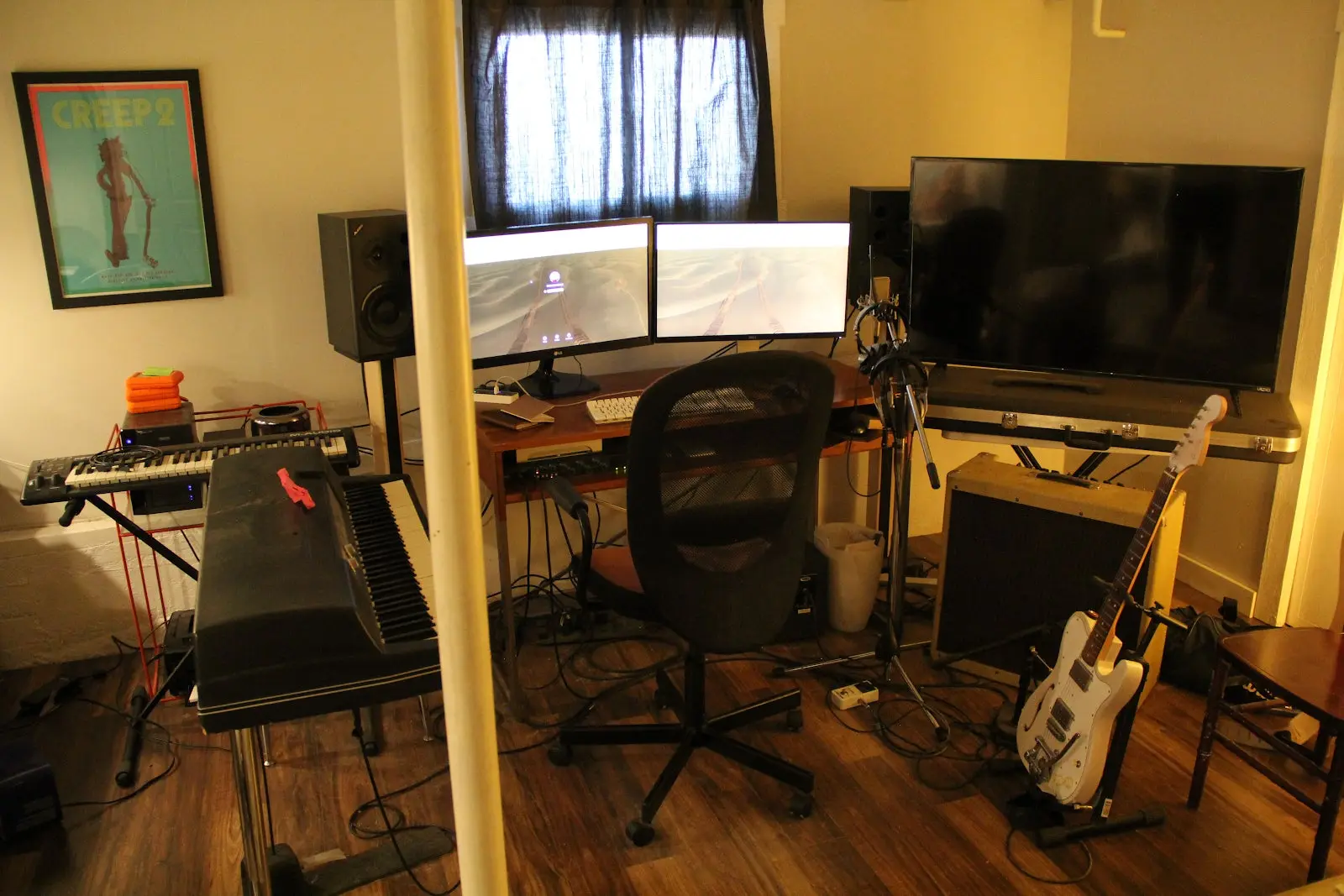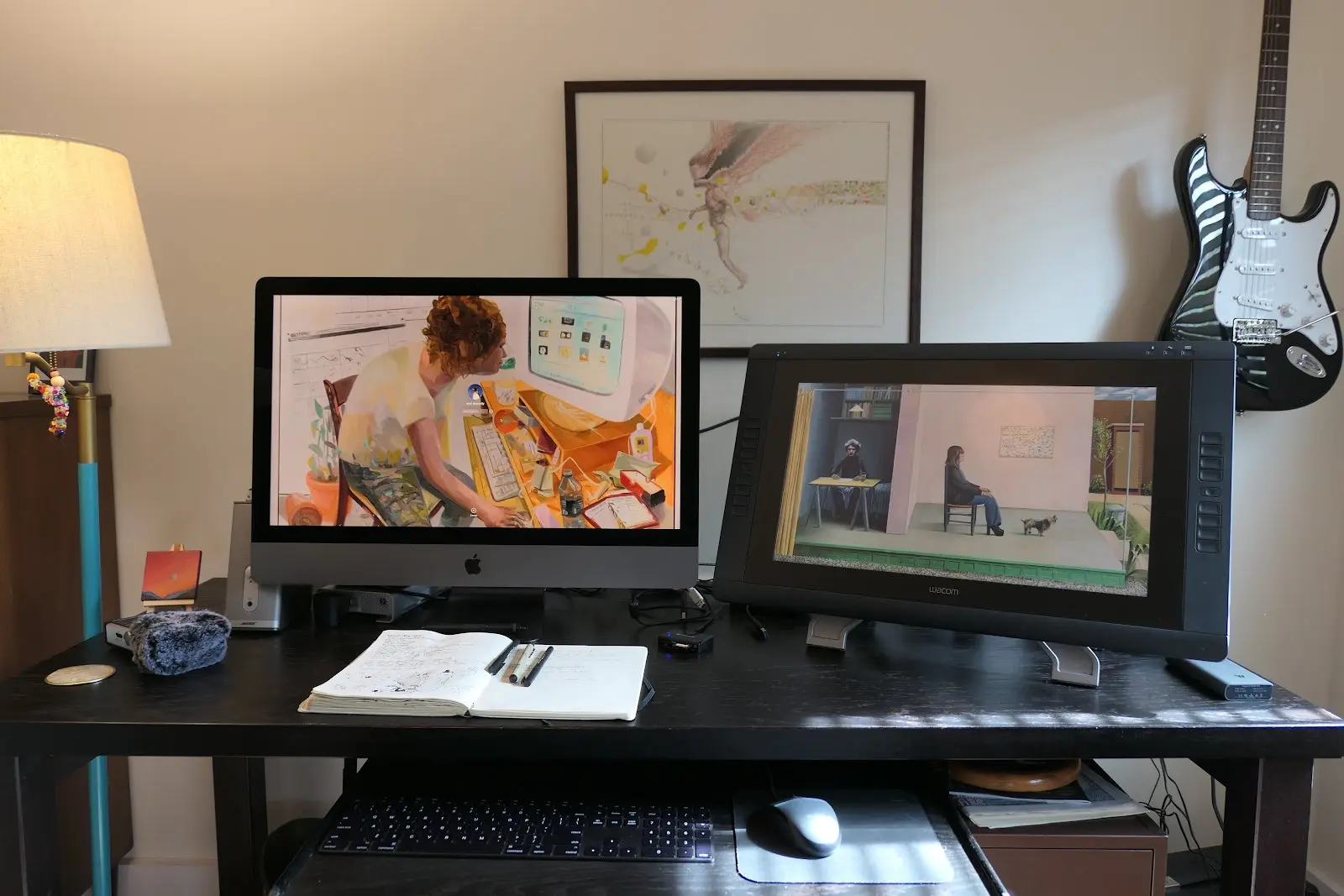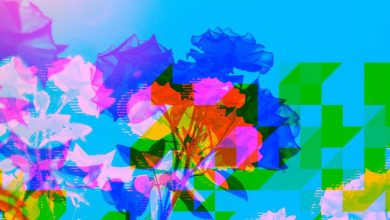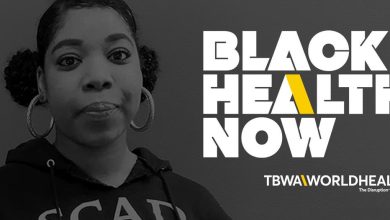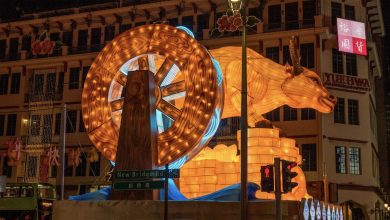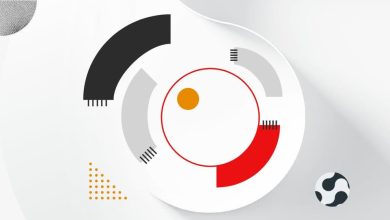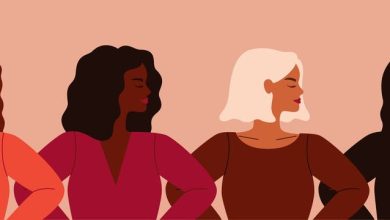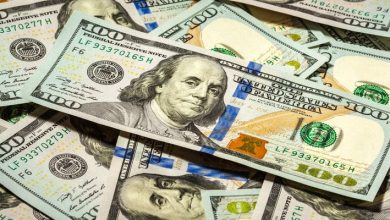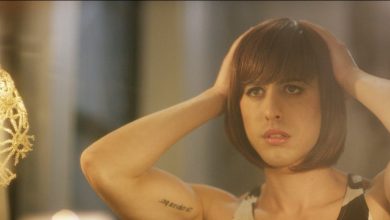The editing and animation of The Lady and The Dale
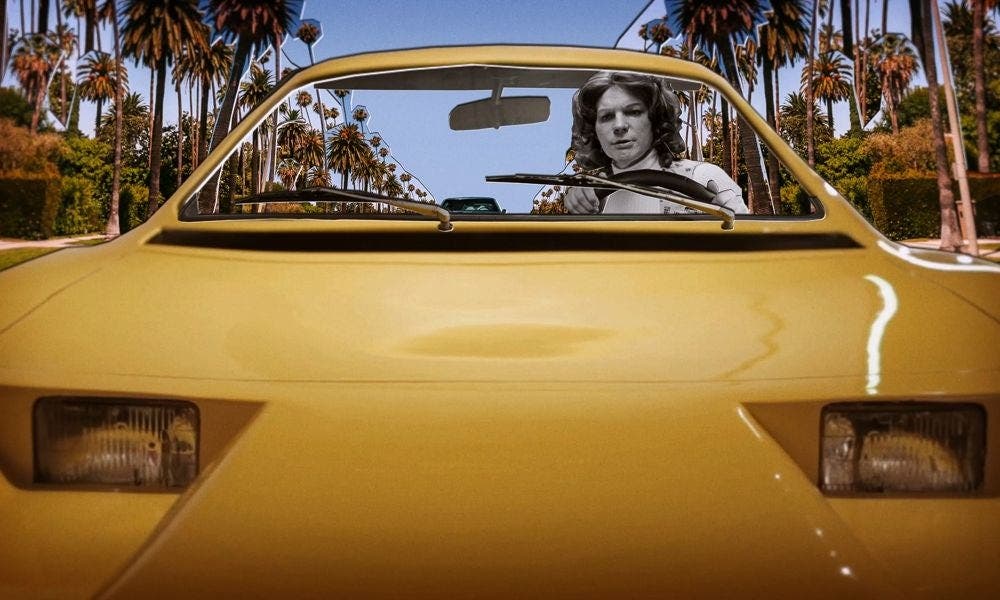
Editor Chris Donlon and Animation Director Sean Donnelly of HBO Max’s The Lady and The Dale discuss the post-production and animation workflow behind the series.
Image source: HBO.
HBO Documentary Films’ The Lady and The Dale, a four-part documentary series from Emmy®-winning producers Mark and Jay Duplass (HBO’s “Room 104”) and directed by Nick Cammilleri and Zackary Drucker, traces the audacious story of Elizabeth Carmichael, a larger-than-life entrepreneur who rose to prominence during the 1970s oil crisis with her promotion of a fuel-efficient, three-wheeled car known as The Dale. At a time when three big American automobile manufacturers ruled the road, Liz launched a futurist vehicle that promised to get 70 miles to the gallon. Her promotional zeal thrust her into fierce public and media scrutiny which uncovered a web of mystery and suspicion about the car’s technology and her own checkered past. The Lady and The Dale is a probing exploration of family and identity seen through the lens of the rise and fall of a fearless and wily innovator, an extraordinarily resilient woman and a dedicated parent.
The captivating story is told through an incredible use of stop motion animation blended with archival content. Lead Editor Chris Donlon and Animation Director & owner of animation house Awesome and Modest Sean Donnelly talk about bringing this project to life using Premiere Pro, After Effects, Adobe Animate and Photoshop, and share their tips and tricks for animation and editing.
Contents
How and where did you first learn to edit/animate?
Chris: I grew up at the tail end of the analog era so I was using VHS tapes and two VCRs in my family’s living room in the early 90’s to edit together movies my friends and I would make after school. It was a laborious and imperfect process of trying to time hitting the record button and play button at the exact right time to get the edit to start where you wanted it. Keep in mind VHS is a destructive medium so every time you mess up and have to record over your mistake the footage becomes more and more distorted. Needless to say I was pretty ecstatic about the possibilities when home non-linear editing systems like Adobe Premiere Pro were introduced.
Sean: I taught myself how to make little computer animations when I was in middle school and would draw them all with my mouse. I made some animated hypercard games too, which was an early Mac thing that was kind of like an interactive website for one that only lived on your computer. But I learned how to animate better when I went to film school at NYU and took animation classes there.
How do you begin a project/set up your workspace?
Chris: Usually I like to start a project by thinking about the musical world it might live in. I’ll ask the director if they have any songs and/or soundtracks they’ve been thinking of and I’ll use those tracks as a foundation for a playlist that will help me start the process of getting into the mood of the project and serve as the initial inspiration for the edit. For The Lady and The Dale Zackary Drucker our co-director introduced me to Glenn Copeland, an amazing trans musician whose music became integral to the soundscape of the documentary. We were able to feature one track of his in each episode, using tracks from their earlier pioneering electronic album Keyboard Fantasies for the episodes set in the 60s and 70s, while a newer track worked perfectly for the end credits. It was exciting for us to be able to layer in this kind of subtle musical narrative underneath our main narrative and it was important to us to have trans artists and voices help to tell Liz’s story.
Sean: I start by trying to build a unique visual style for a project. It’s usually a combination of finding the right reference art, drawing some things, making some little animation tests, and building out a set of rules and limitations. I also like to clear all the junk off of both my computer desktop and my real desktop.
Tell us about a favorite scene or moment from this project and why it stands out to you.
Chris: One sequence which I think stands out in The Lady and The Dale is what we affectionately call the “Madcap Montage,” which occurs early in episode one and is essentially the backstory of Liz’s marriages and mischief in her earlier years told through FBI files, which were the only source texts we had for telling this part of the story. Zackary conceptualized this sequence as a high energy animation showcase that would give us a full sense of Liz’s outlandish origins and lay the foundation for the rest of the series. With practically zero archival to work with the scene was an effort in construction from top to bottom. We started by shifting through hundreds of pages of FBI files to find the most vivid and narratively propulsive details and construct a paper cut of the scene in a shared google doc. I then recorded my own voice as a temp “FBI guy” track to create a radio edit that would allow us to hone in on the timing. At this stage our assistants created rough collaged storyboards based on our visual ideas that we could send to our animation team at Awesome and Modest to use as a rough reference to what we were thinking. Sean Donnelly at Awesome and Modest then did his own full storyboard and we went back and forth between animation and editorial refining the visuals and timing until we arrived at the final sequence. In the end it was really gratifying to be able to participate in the process of transforming dense and dry FBI files into a true “Madcap Montage”.
Sean: A scene that comes to mind is in episode 4 where they are talking about Liz’s daily routine while she’s running her new flower business in Texas. Instead of showing it all very literally, we went with a more dreamlike approach and made it all one flowing, time lapse of her day in a surreal, flower world. It’s an example to me of using animation to create more heightened feelings and worlds you could never do with re-enactments. It’s also an example of how you can create a narrative flow with animation and tie all these different details and ideas together in one, continuous shot. I think it helps simplify the information we’re trying to get across while also making it something that’s more than just that.
What were some specific post-production challenges you faced that were unique to your project? How did you go about solving them?
Chris: Maybe the biggest challenge of The Lady and The Dale was the lack of archival. Aside from one audio interview of Liz, some press photos and articles, the KABC reporting, and a smattering of family photos and truncated sound bites, there wasn’t a lot of original material to draw from. How do you get inside the emotions of a story without that visual support? Early on in the edit I realized that through Liz’s press photos we had her face from a number of different angles with a wide range of expressions and that it may be possible to create a sort of 2D paper cut out puppet of Liz to animate with. I thought animation could be a great way to portray the subjectivity of Liz’s experience and get inside the grandiosity of her self-perception. To test these ideas out I had our assistants, Mel Mel Sukekawa-Mooring and Johanna Cameron, create temp cut and paste collage animation using After Effects for key scenes and I also asked my wife Lauren Donlon, who is an artist, to animate the spider in the episode one title sequence. We presented our tests to the team and they liked the direction, so we went ahead and hired our animation house Awesome and Modest who were able to elevate every aspect of the animation and bring Liz’s story to life in a way that we weren’t sure was possible in the beginning. Plus my wife’s spider animation did make it into the final cut of episode one which I love!
Sean: Our main challenge was to get tons of animation done in a fairly short amount of time. We had a team of over 20 people helping to get it all done, so it was also a challenge to figure out a way to make all these different artist’s scenes all work together and have a consistent style. The first part was solved by just working a lot, and building an organized asset library as we went along to save time on future shots. The second part was solved by having a pretty robust compositing phase as the final step in the animation process, where we could adjust and color correct everything to have the feel we wanted.
What Adobe tools did you use on this project and why did you originally choose them? Why were they the best choice for this project?
Chris: When I first joined The Lady and The Dale it was already living in Adobe Premiere Pro, which I thought was a great choice. As our team expanded our assistants were able to work closely with the team at Adobe to provide us the best tools and support for sharing projects between multiple editors and assistants across several different systems on the same server. I have to say the latest project sharing capabilities in Premiere Pro are really amazing and saved us a lot of time early on in the edit. Of course, once the pandemic hit, we had to shift to a remote workflow and thanks to Premiere Pro’s flexibility and one prescient editor who made clones of our drives just before the work-from-home mandate went into effect, we were able to make the transition with relative ease and be up and running again in just a day or two. As we started playing with animation our assistants and animators used After Effects extensively on The Lady and The Dale.
I love Premiere Pro’s flexibility, its keyboard shortcut customization tools, and its seamless integration of multiple file formats. The latter is especially key when working in documentary filmmaking.
Sean: For the animation, we exclusively used the Adobe suite for every step of this project. To start, I used Adobe Animate to make all my animatics, which are just sloppy drawings timed out to the audio. We then used After Effects for all of the animation and compositing. We used the pencil and pastel brushes in Photoshop for all of the hand drawn looking elements in the show. We also used Premiere Pro to edit everything together and tweak the timing of a scene.
I love After Effects. It’s by far my favorite program. I don’t even know what my second favorite program is. I’ve been using it for over 20 years, and I’m still always learning new things in there. Whether I want an animation to look really slick and fancy, or very DIY and like it was all made by hand, After Effects is the tool for the job. No matter what program we create animation in, we always use After Effects to add texture, vignettes, grain and all the little things that give it a more sophisticated and unique look. I started off making hand drawn animation and stop motion and really love the texture and feel of real objects. I’ve learned over the years how to use After Effects to make animations that look just as lifelike, but it gives me much more control and saves me a lot of time.
Chris: My favorite workflow hack is having incredible assistant editors! On a more technical level on The Lady and The Dale we used a lot of Extended Markers on our timelines to be able to designate which scenes were to be animated, cut with archival or cut with stock footage and have our post team keep track of the amount of each kind of visual material we were using in each episode and the status of each scene.
Sean: I just learned the other day that if you do an animation in Animate, you can just import the whole file right into after effects, and it will preserve all the layers and everything. I love how the programs work together so well like that, and how they keep making them better.
Who is your creative inspiration and why?
Chris: First, for The Lady and The Dale, an early inspiration for us that co-director Nick Cammilleri pointed me to was Errol Morris’s Tabloid, both for its use of some collage style animation and its deconstruction of media tropes. Second, on a personal level, I went through a period when the Vine app was around where I made a number of looping stop-motion vines and people like Michel Gondry, Kirsten Lepore and Don Hertzfeldt were inspiring to me in that they made the idea of creating animation on your own feel attainable. Lastly, though it’s probably a given, Walter Murch Is such an icon as an editor and his book “In the Blink of an Eye” is something I still reference all the time and keeps me humbled and focused as an editor on the important thing: the movement of emotion in the story.
Sean: There are so many great artists out there that I find inspiring. Personally, I tend to gravitate more to the people who like to experiment and play around with different styles and find new ways to do things. People that embody that spirit to me are Shynola, Encyclopedia Pictura, Michel Gondry, Andrew Thomas Huang, and people like that. But really I’m most inspired by my friends and collaborators who are always raising the bar on what I think is possible. People like Chason Matthams, Ben Luce, Abbey Luck, Jordan Bruner, Sophie Koko Gates, and the list goes on.
What’s the toughest thing you’ve had to face in your career and how did you overcome it? What advice do you have for aspiring filmmakers or content creators?
Chris: Overall I’ve been very fortunate in my career so far as I’ve had the privilege of working in a wide variety of genres with smart, empathetic people. The toughest thing was early on when I wasn’t sure if I’d be able to find the opportunities that would bring me to where I wanted to be. I think the best advice is to stay creative and make things while building a strong community of collaborators. The vines I made once helped me land an editing job and the friends I went through film school with have led me to most of my opportunities in the film industry.
Sean: The toughest part is getting started. The world can be a cruel place, and most people don’t want to give you your first job, they want to hire someone with a track record. When I got out of school, I emailed as many people as I could every day and almost all of them ignored me. I kept making shorts and music videos and most of them didn’t feel like they went too far. But each one led me to the next opportunity. My advice would be to focus on the areas you have control over, which is the work you are making. Don’t get too caught up in the job or the opportunity that you have no control over. You often don’t have a clear perspective when you’re in the middle of your struggle, but years later will you be able to see how that failed project ended up leading to something you never expected. If you can get to a place where you really just care about the project and aren’t worried about what might come from it, I think that is the answer to everything.
Photo shared by Chris Donlon
Chris: Currently my workspace is in the basement of our house. You have to walk outside to access it and I feel grateful for the small amount of separation even while working from home. In the past I’ve been able to have directors over and with the small couch and monitor setup it feels pretty close to working in a professional office, though the low ceilings sometimes give it a 7 ½ floor from Being John Malkovich vibe. I love that it functions a dual purpose as a recording space for my music hobby.
Photo shared by Sean Donnelly
Sean: I like working in a small space. There are less distractions and everything I need is right here in front of me. I don’t ever put up any of my own drawings, but I love to have other people’s art around me. I guess it’s like the difference between having a good conversation vs mumbling to myself. I also keep an old fashioned, non-digital notebook on my desk and use it instead of typing notes. I make all my daily lists in it. I also have a guitar that I barely ever play.
The Lady and The Dale is available to watch on HBOMax.
Source : Adobe

